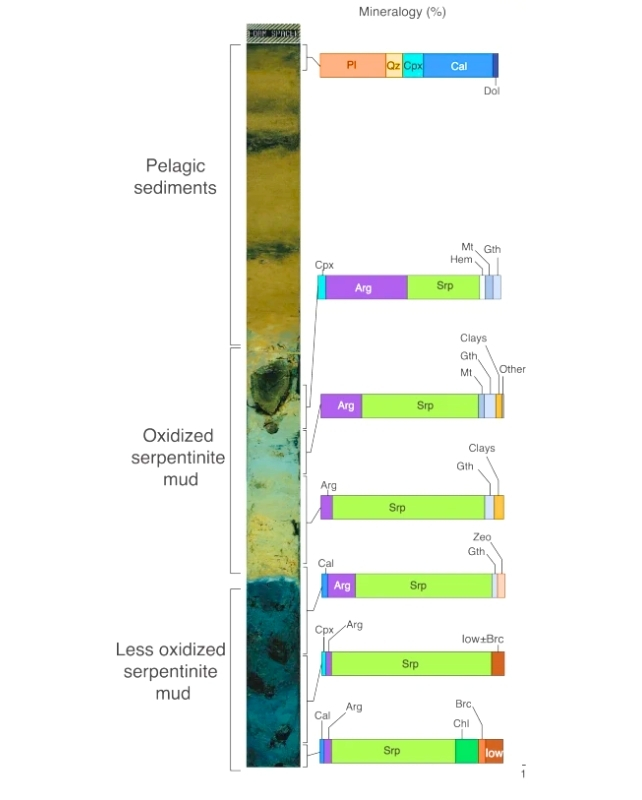Unexpected biosignatures found in a startlingly blue volcanic goo beneath the Pacific Ocean may offer clues to life's origins.
Exhumed from mud volcanoes near the Mariana Trench, at depths of almost 3,000 meters (9,833 feet), the bizarrely colored sediment samples contain fats from mysterious living organisms.
With an extremely high pH of 12 – among the highest recorded in a natural ecosystem – this nutrient-poor ooze would cause severe burns to your skin on contact. Yet researchers have now confirmed that some extremophile microbes live there.
"It is simply exciting to obtain insights into such a microbial habitat because we suspect that primordial life could have originated at precisely such sites," says University of Bremen organic geochemist Florence Schubotz.
"What is fascinating about these findings is that life under these extreme conditions, such as high pH and low organic carbon concentrations, is even possible."
Related: Microbial Life Has Been Found Deep in Earth's Crust Beneath The Ocean Floor
University of Bremen geoscientist Palash Kumawat and colleagues examined 2 of 9 mud volcano sediment cores extracted in 2022, during the R/V Sonne expedition SO292/2.
The bottom section of one taken from the Pacman volcano consists mainly of serpentinite with bits of brucite, largely untouched by the seawater above, allowing it to maintain its striking color.
At shallower depths, closer to the mud from the ocean floor, the volcanic sediment pales to a lighter blue-green, and the brucite has been dissolved by salt water.

Within these serpentinite layers, Kumawat and team detected fats from bacterial and archaeal cell membranes – the microbes' "first line of defense" against highly alkaline conditions.
The mostly intact state of the fats indicates multiple communities of microbes are currently eking out a living in these extreme conditions, the researchers explain. The molecules also revealed an abrupt shift in types of organisms between the ocean-floor pelagic sediment and serpentinite mud.
Serpentinites are known to help sustain chemosynthetic life in other low-nutrient locations across the ocean's vast floor, and now Kumawat and colleagues have confirmed this can also occur in deeper and denser serpentinite mud.
Like plants do through photosynthesis, these microbes make their own energy from methane by consuming sulfate, which produces corrosive hydrogen sulfide.
"Until now, the presence of methane-producing microorganisms in this system has been presumed, but could not be directly confirmed," says Schubotz.
Life below the seafloor is estimated to make up 15 percent of Earth's biomass, which means it contributes significantly to Earth's nutrient cycles. But we know very little about it.
So Kumawat and team are keen to explore these extremophiles further and see what they can tell us about how life sparked into existence on a planet nowhere near as hospitable as Earth is today.
This research was published in Communications Earth & Environment.

